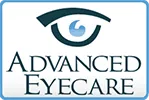
Vision Therapy Could Improve Your Child's Eye Movement Disorder
An eye movement disorder could be to blame for your child's poor eye-hand coordination or problems at school. Eye movement disorders aren't always noticeable, but can lead to issues with reading, depth perception, and coordination. Vision therapy strengthens the pathways between the eyes and the brain, improving the symptoms of eye movement disorders.
What Causes Eye Movement Disorders?
The brain plays an important role in vision. The brain processes and stores information received from the eyes and also controls eye movements. Your child's eyes may not work together well or move smoothly if there's a problem with the muscles that control the eyes or the messages the brain sends to the eyes.
Among the most common eye movement disorders are:
- Strabismus (Crossed Eyes). The brain receives conflicting information and must struggle to produce clear, crisp images if the eyes are misaligned. Your child could have strabismus even though his or her eyes look perfectly fine. Even slight misalignments can cause vision issues in both children and adults. About 4% of people in the U.S. have strabismus, according to the American Association for Pediatric Ophthalmology and Strabismus.
- Amblyopia. Commonly called "lazy eye," amblyopia occurs when the brain disregards the information it receives from one eye. Strabismus is a common cause of amblyopia, as are cataracts and extreme nearsightedness or farsightedness.
- Nystagmus. Nystagmus causes involuntary eye movements. Your child's eyes may move in circles, up and down, or from side to side.
- Convergence Insufficiency. The eyes must converge, or turn inward, to the same degree when focusing on close objects. If your child has convergence insufficiency, one eye may turn further than the other.
- Oculomotor Dysfunction. Oculomotor dysfunction may make it difficult to move the eyes smoothly, keep a steady gaze, or follow a moving object.
Treating Eye Movement Disorders
Although eye movement disorders aren't always noticeable, they can cause significant problems for your child. Signs and symptoms of eye movement disorders include:
- Blurry or Double Vision
- Headaches
- Eyestrain
- Dizziness
- Tilting the Head
- Slow Reading Speed
- Reversing Letters or Numbers
- Fatigue When Reading
- Coordination and Balance Issues
- Difficulty Copying Words, Numbers, or Shapes
Behavioral problems can also be caused or worsened by eye movement disorders. Children who struggle to read or write due to their vision issues may act out in frustration. Vision disorders can also affect your child's social life or make playing sports difficult.
Fortunately, vision therapy offers an effective way to treat eye movement disorders. Your child's vision therapist develops a vision therapy plan designed to address your child's specific vision disorder. These therapy plans may involve:
- Hands-on Activities. Vision therapy activities are designed to be enjoyable for kids. Your child might strengthen tracking skills by following the pathways in a maze or improve eye-hand coordination with a game of Whac-A-Mole. Standing on a wobbly board while finding specific letters on a chart could help improve balance and eye coordination. These and other activities gradually improve the connection between the eyes and brain and may help establish new pathways in the brain.
- Computer Games. Your child's therapy session might involve playing computer games to improve visual coordination, movement, and tracking skills. As your child shoots targets, bursts bubbles, or catches falling objects, he or she will be developing teaming, tracking, focusing, visual processing, and motor skills needed for good vision. In an amblyopia research study that appeared in JAMA Ophthalmology in 2016, visual acuity (sharpness) improved by 1.5 lines in children who played a special iPad game versus 0.7 line for kids who wore an eye patch.
- Prism Lenses. Prism lenses make reading easier if your child's eyes are misaligned. The lenses bend light rays and focus them at the proper place on the retina, the light-sensing layer of tissue at the back of the eye.
Ready to find out if vision therapy could help your child? Call our office to schedule an appointment with the vision therapist.
Sources:
American Association for Pediatric Ophthalmology and Strabismus: Strabismus, 10/7/2020
https://aapos.org/glossary/strabismus
JAMA Ophthalmology: Binocular iPad Game vs Patching for Treatment of Amblyopia in Children: A Randomized Clinical Trial, 12/2016
https://jamanetwork.com/journals/jamaophthalmology/fullarticle/2579931
American Optometric Association: Nystagmus
https://www.aoa.org/healthy-eyes/eye-and-vision-conditions/nystagmus
Review of Optometry: Managing Vision Disorders in Children, 7/15/2019
https://www.reviewofoptometry.com/article/managing-vision-disorders-in-children
